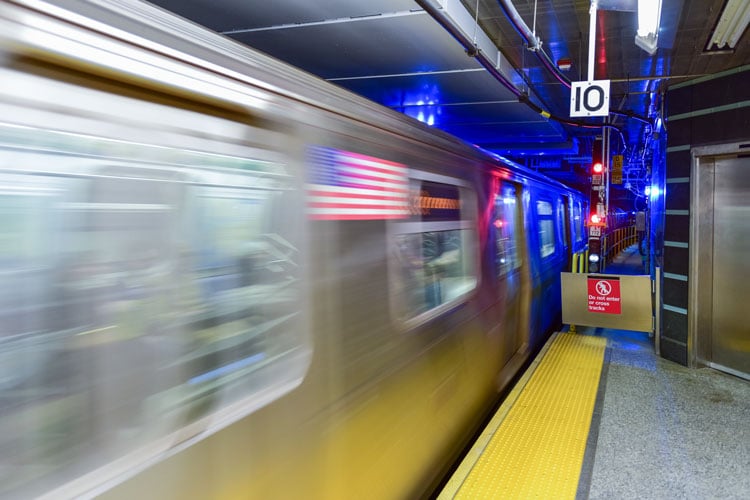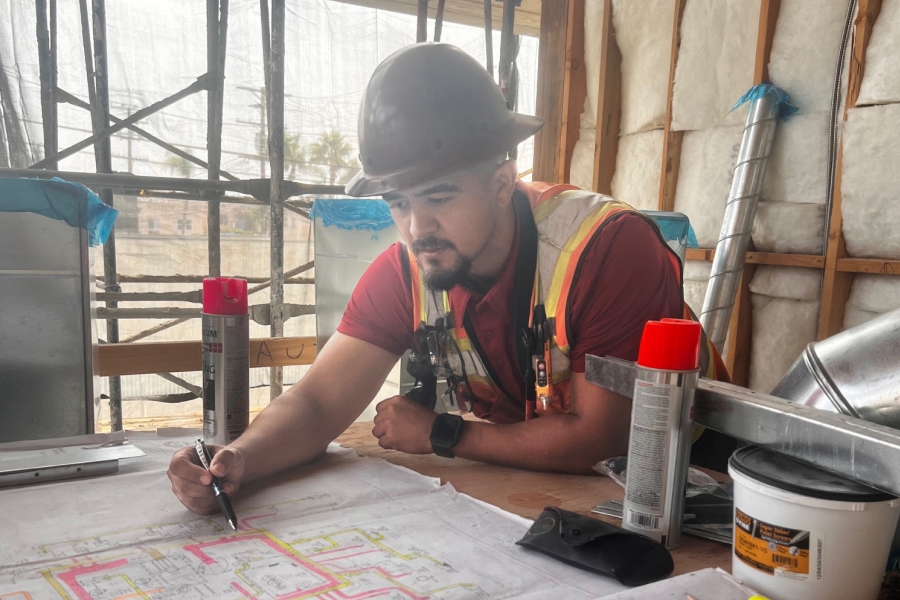Every New Yorker knows the frustration of subway delays caused by signal failures. The MTA’s train signal system is outdated—it’s the same fixed-block signal system that was originally used when the subway system opened in 1904, and it’s prone to signal failures that cost New Yorkers time and money every day. But, the age of digital technology is constantly improving upon traditional techniques, and a tool like Bluebeam Revu in the hands of Senior Project Engineer James Inglima of E-J Electric Installation Co. can save his company, and the entire city of New York, valuable time.
In a fixed-block system, if a block of track is occupied by an entire train or a single car, the entire block is signaled as unavailable to every other train operator. But, when a signal switcher fails mechanically, the track is signaled as unavailable to train operators even when there is no train, leading to extra track congestion and delays as operators must use other lines until the mechanical issue is located and corrected.
One common cause for signal failures is voltage sag. The MTA has three times as many trains running as the system was designed to optimally handle, drawing more power through lines and signal systems. When the power supply drops, the power draw increases, and unless the supply rises to stabilize the current, signal switchers can malfunction and close blocks of track. As part of the governor’s initiative to rehabilitate the subways, contracts went out to install voltage sag correctors at all of the signal switchers, a relatively simple but time-consuming operation due to the immense scale of the NYC subway system. E-J Electric Installation Co., one of New York’s largest electrical contracting companies and a regular contractor for the MTA, won the work to install sag correctors across 96 stations. Those stations encompassed all of Brooklyn, as well as parts of Manhattan, the Bronx and Queens.
This is where Inglima comes in to do the job with Revu, Bluebeam’s PDF based platform for editing, marking up and sharing blueprints. Inglima’s task was to survey signal switchers, take pictures and document measurements, then create blueprints for the installation of the sag correctors. Traditionally, a job like this would require at least two days for each blueprint, but the team decided to try Revu on a Microsoft Surface tablet to see if they could save any time. The performance was so positive that even Inglima, a fan of Revu, was surprised by how much time they saved.
“This unique job was perfect for (Revu). The New York City transit, I don’t know if there’s another system like it in America, but for the amount of detailing in sketches in this thing, the equipment down there, it’s perfect for going out and doing sketches instead of having to bring a clipboard and hand sketching it with a ruler and doing all that,” Inglima explained. “Being able to import pictures is huge, so we can take pictures of existing situations, and that way I can direct my foremen where I want them to be or how I want them to install something. I just use the existing picture and I could show it right on there.”
There was no turnover time, there was no going back to the office. I figure we saved ourselves another 96 days.
The experiment worked. “We did 96 stations in 96 working days,” Inglima said proudly. “I was able to use the signature tools that day, and everything got signed and sent out for production immediately. There was no turnover time, there was no going back to the office. I figure we saved ourselves another 96 days.”
There was a learning curve, Inglima mentioned, but he was pleased to discover deeper and more intuitive functionality in Revu than he had known before this project. “Once I was kind of comfortable doing a couple things, I’d ask, ‘I wonder if there’s any way to do that?’ And boom, there it was.”
Even when the technology exists, someone has to be the first to try it out beyond the lab and discover the practical applications. Inglima noted that “The older guys have been doing it with a pen, paper, rulers and colored pencils for years and years. And I show up with my tablet, and I’m in and out… it took me eight hours for the first one, but once you get it, 15-20 stations in, I’m done in five hours.”
Inglima added, “We supplement a lot of our drawings now with sketches that we do in Revu.”
There are still many challenges ahead for the NYC subways, but at least for Inglima and E-J Electric Co., they’re taking advantage of the cost-saving solutions that modern technology offers and making the daily commute of millions of New Yorkers that much faster.











